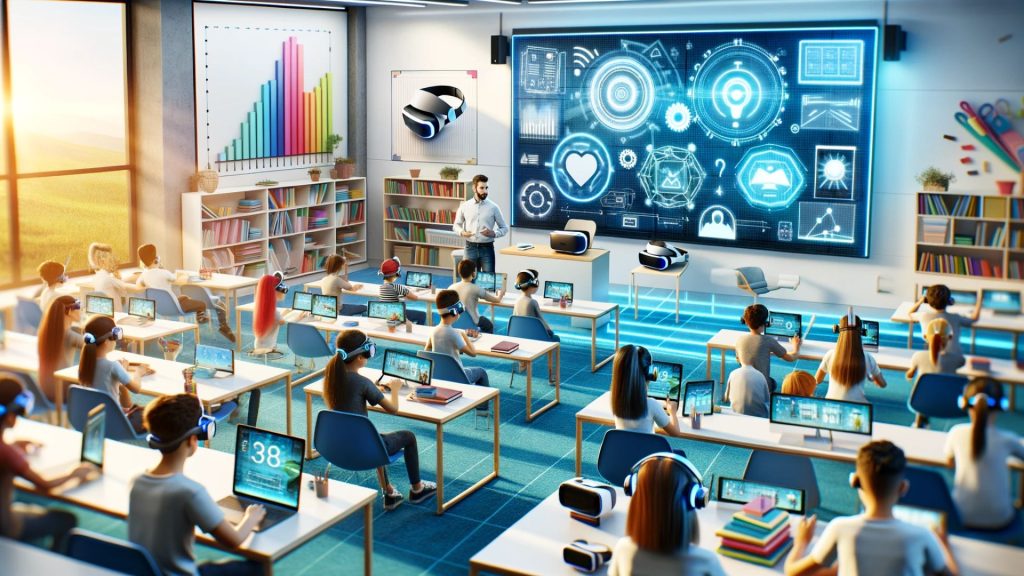The Impact of Technology on Modern Educational Systems
Aiden Foster August 12, 2025
In recent years, technology has increasingly transformed how educators deliver, students experience, and people access education across the globe. This shift is not only affecting traditional classrooms but is also reshaping the entire educational ecosystem. From e-learning platforms to AI-based personalized learning systems, technology is revolutionizing how we think about teaching and learning. This article explores the profound impact of technology on modern educational systems, highlighting key trends and emerging technologies that are changing the landscape of education.

The Rise of Online Learning Platforms
One of the most significant transformations in education brought about by technology is the widespread adoption of online learning platforms. E-learning has broken geographical barriers, enabling students from different parts of the world to access high-quality education at their convenience. Platforms such as Coursera, Khan Academy, and Udemy offer a vast array of courses, ranging from technical skills to humanities, making education more accessible to a global audience. This trend has not only democratized learning but has also given rise to the concept of lifelong learning, where students of all ages continue to acquire new skills throughout their lives.
The COVID-19 pandemic forced educational institutions worldwide to adopt remote learning solutions almost overnight, accelerating the shift to online education. While this sudden transition posed challenges, it also demonstrated the potential of digital platforms to facilitate learning even in unprecedented times. According to a report from the United Nations Educational, Scientific and Cultural Organization (UNESCO), over 1.6 billion students worldwide were impacted by school closures during the pandemic, highlighting the importance of remote learning solutions. Technology ensured that education could continue uninterrupted in many parts of the world.
Artificial Intelligence: Personalizing the Learning Experience
Artificial intelligence (AI) is another technology that is making a significant impact on modern education. AI is enabling personalized learning experiences that cater to the individual needs of students. Traditional education models often rely on a one-size-fits-all approach, where all students receive the same instruction, regardless of their unique learning styles, paces, or strengths. However, AI-powered tools are changing this by offering adaptive learning platforms that adjust the difficulty level of tasks, recommend personalized resources, and provide real-time feedback based on a student’s performance.
For example, platforms like DreamBox and Squirrel AI use AI algorithms to analyze student responses and tailor their learning experiences accordingly. These systems track progress and adapt the content dynamically, ensuring that each student is challenged at the right level without feeling overwhelmed. By making learning more individualized, AI helps foster better understanding and retention of knowledge. This personalized approach has the potential to improve learning outcomes, especially for students who may struggle with the standard pace of traditional classrooms.
Gamification and Interactive Learning
Another emerging trend in the integration of technology into education is gamification. By applying game-design elements such as challenges, rewards, and leaderboards, gamification enhances student engagement and motivation. Platforms like Duolingo, which teach languages through a series of interactive challenges, have become incredibly popular, showing how gamification can make learning both fun and effective.
The use of gamification in education is particularly beneficial for younger students, as it taps into their natural curiosity and enthusiasm for games. Research has shown that gamified learning environments can increase student participation, improve retention, and even promote teamwork and collaboration. Gamification also allows students to learn at their own pace, offering instant feedback and encouraging continuous progress. By turning learning into an interactive experience, students are more likely to stay engaged and retain information in a deeper way.
Virtual Reality and Augmented Reality: Enhancing Immersive Learning
Virtual reality (VR) and augmented reality (AR) are technologies that are increasingly being used to create immersive learning experiences. These technologies have the potential to transform how students interact with complex concepts by making learning more hands-on and visually engaging.
For instance, in medical education, VR can simulate surgeries, allowing students to practice and hone their skills in a safe and controlled environment. Similarly, in history or geography classes, AR can bring historical sites or geographical features to life, providing students with an interactive and dynamic way to learn about the world. Studies have shown that VR and AR enhance student engagement, improve memory retention, and provide a deeper understanding of the subject matter.
One of the most promising aspects of VR and AR in education is their ability to cater to different learning styles. Visual learners benefit from the immersive visuals provided by VR, while kinesthetic learners can practice hands-on skills through interactive simulations. This shift toward experiential learning can lead to better student comprehension and foster critical thinking skills.
The Digital Divide and Access to Technology
Despite the many advantages of technology in education, one of the challenges that remain is the digital divide. Access to high-quality technology and the internet is still a significant issue in many parts of the world. According to a report by the World Bank, more than 40% of the global population does not have access to the internet, which creates disparities in educational opportunities. Students in rural areas or low-income communities may not have the same access to digital tools, such as computers and high-speed internet, which can hinder their ability to participate in online learning.
To address these disparities, various initiatives are being launched to bridge the digital divide. Governments and NGOs are working to provide affordable internet access and digital devices to underserved communities. Programs such as the One Laptop per Child initiative aim to provide children in low-income countries with access to technology, thus empowering them with the tools they need to succeed academically. Additionally, some educational institutions are adopting hybrid models that combine online and in-person learning to ensure that students from all backgrounds can benefit from technological advancements.
Conclusion: Technology’s Role in the Future of Education
The integration of technology into modern educational systems has already begun to reshape how learning is conducted, and its impact will only continue to grow. From online learning platforms that make education accessible to anyone, anywhere, to AI-based systems that provide personalized learning experiences, technology is enhancing the learning process in ways that were once unimaginable. Gamification, VR, and AR are adding excitement and engagement to traditional subjects, while addressing diverse learning styles.
However, it is essential to recognize that while technology holds immense potential, it is not without its challenges. The digital divide remains a significant barrier that needs to be addressed to ensure that all students can benefit equally from these advancements. Furthermore, as we continue to integrate more technology into education, it is crucial to maintain a balance between digital tools and traditional teaching methods to ensure that the human element of education is not lost.
As we look to the future, it is clear that technology will continue to play a vital role in shaping modern educational systems, making education more inclusive, accessible, and engaging for learners around the world.
References:
- UNESCO. (2020). Education: From disruption to recovery. Available at: https://en.unesco.org (Accessed: 12 August 2025).
- Li, L., & Chan, K. (2021). Artificial intelligence in education: A review. Journal of Educational Technology & Society, 24(1), 39-52. Available at: https://www.jstor.org (Accessed: 12 August 2025).
- Anderson, C. (2019). Gamification in education: What we know, and what we need to know. Educational Technology Research and Development, 67(1), 1-17. Available at: https://link.springer.com (Accessed: 12 August 2025).








